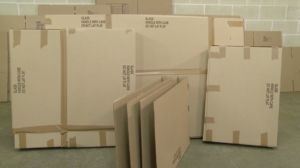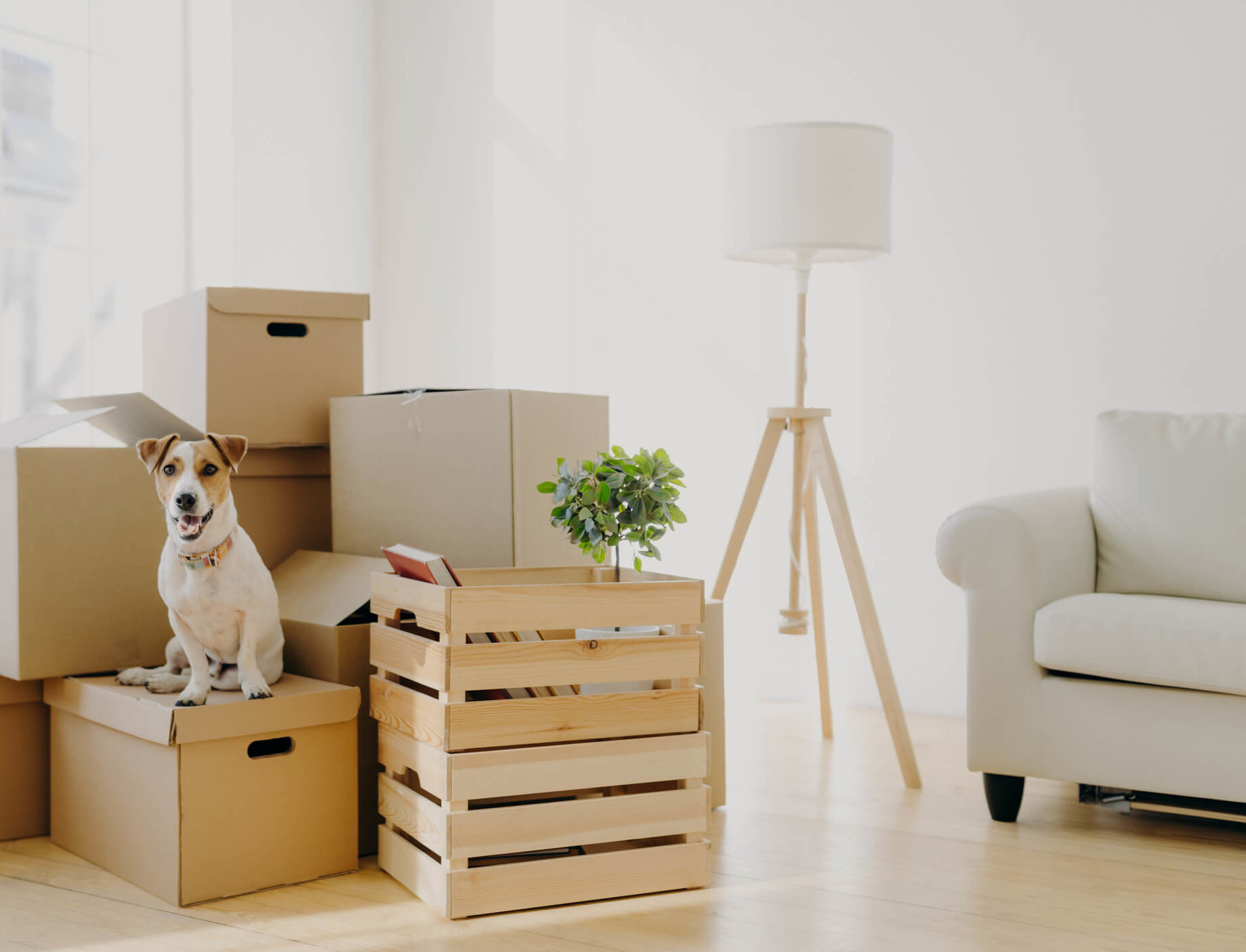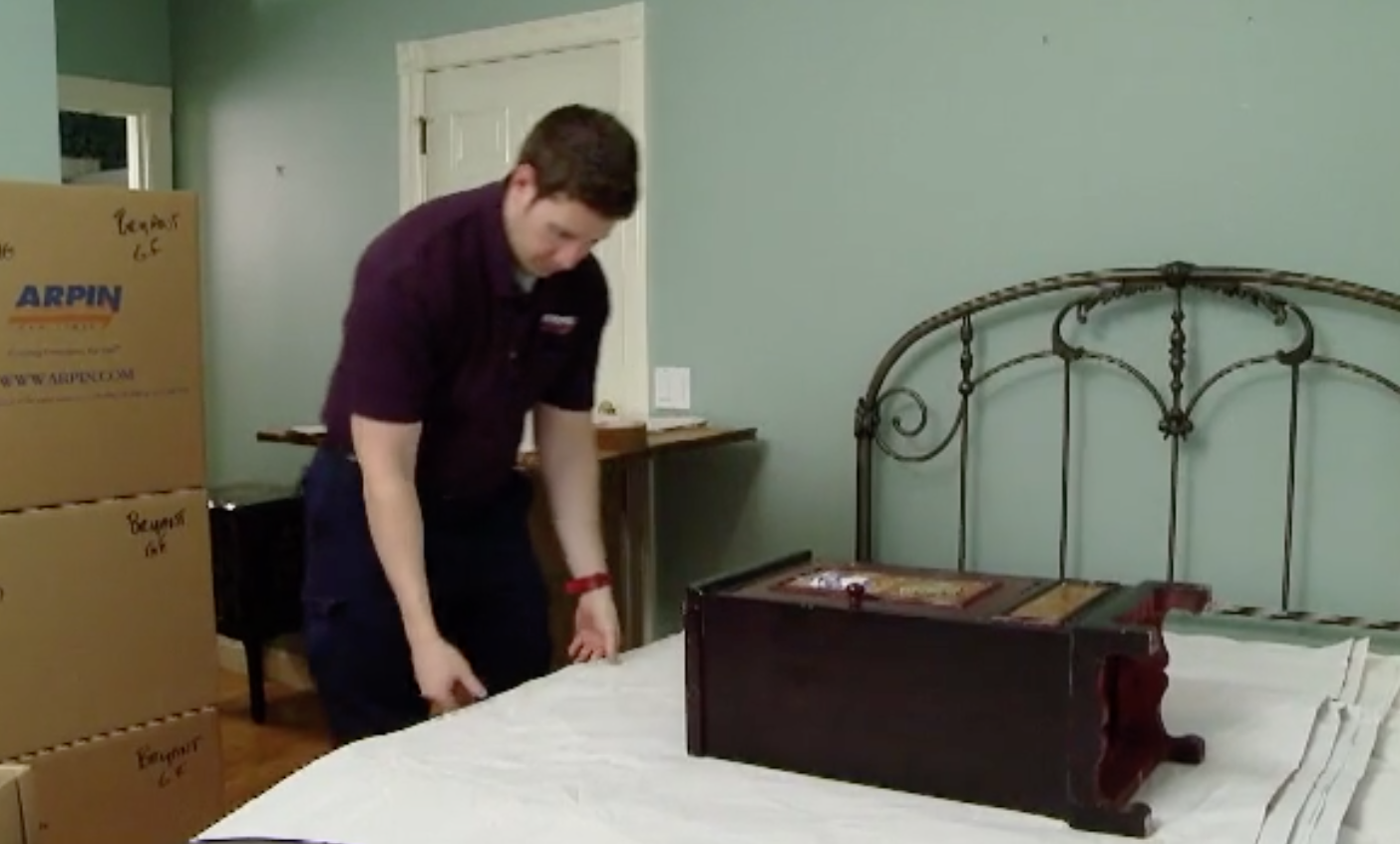Once it has been decided to pack an item, where and how should it be packed?
After you have decided that the item must be packed, there are five basic questions
you have to consider to decide how to pack it properly.
1. What type of container should be used to pack the item?
2. What kind of material should be used to wrap the item and how much of it should be used?
3. What other items (if any) should be also be placed in the container along with the item?
4. Where in the carton should the items be placed?
5. How should that item be oriented?
These questions require individual, in-depth answers.
Q.1…What type of container should be used to pack the item?
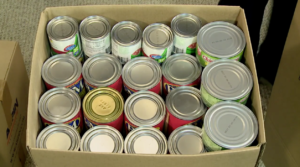
Here are some basic ground rules for cartons size and the types of items that typically are packed into those cartons.
Heavy items like books, canned goods, food, papers, magazines, and tools would go into a 1.5. Also, you would use a 1.5 carton for large numbers of small items like kitchen spices, office supplies, fasteners, etc.
 The medium carton, or 3 cube carton, is a universal carton since it can be used for virtually anything in your home that fits in it; linens, clothes, knick-knacks, pots and pans, electronics, lampshades; literally anything. The 3-cube carton should be your go-to carton because of its moderate size, it is the easiest carton for non-movers to lift and carry without injury
The medium carton, or 3 cube carton, is a universal carton since it can be used for virtually anything in your home that fits in it; linens, clothes, knick-knacks, pots and pans, electronics, lampshades; literally anything. The 3-cube carton should be your go-to carton because of its moderate size, it is the easiest carton for non-movers to lift and carry without injury
 The 4.5 carton, or large carton, is also a universal carton capable of handling virtually any item in your home. The 4.5 is great for bedding, lamps, toys, or literally anything that can fit. Care should be taken with a 4.5 since you can exceed 50 pounds quite easily if you’re packing dense items.
The 4.5 carton, or large carton, is also a universal carton capable of handling virtually any item in your home. The 4.5 is great for bedding, lamps, toys, or literally anything that can fit. Care should be taken with a 4.5 since you can exceed 50 pounds quite easily if you’re packing dense items.
 The largest carton, the 6 cube, is primarily for very large, light items like oversized lampshades, comforters, and the like. It should not be used for the smaller item since the carton will be grossly overweight and the cartons may tear
The largest carton, the 6 cube, is primarily for very large, light items like oversized lampshades, comforters, and the like. It should not be used for the smaller item since the carton will be grossly overweight and the cartons may tear
 In addition to the utility cartons, there’re specialty cartons for hanging clothing.
In addition to the utility cartons, there’re specialty cartons for hanging clothing.
Q.2…What types of material should be used to wrap the item and how much of it should be used?
The number of layers, or the number of times an item is wrapped, depends on the item’s cost and fragility. Always remember that wrapping an item in newsprint is not an end in itself, but rather the means to trap air. The trapped air protects the item.
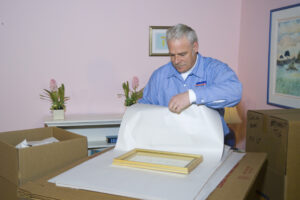 Everything that is considered “fragile” needs to be wrapped at least once.
Everything that is considered “fragile” needs to be wrapped at least once.
 The better fragile items should be wrapped twice.
The better fragile items should be wrapped twice.
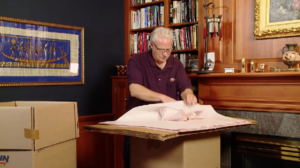 The very best fragile items should be wrapped three times or more.
The very best fragile items should be wrapped three times or more.
Q.3…What other items (if any) should be also be placed in the container along with the item?
There are basically three gravitational principles to packing:
 1.) Heavy, more durable items are placed lower in the carton.
1.) Heavy, more durable items are placed lower in the carton.
 2.) Lighter, more fragile items are placed higher in the carton.
2.) Lighter, more fragile items are placed higher in the carton.
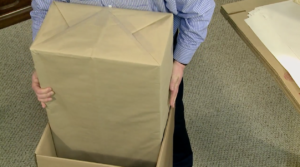 3.) Heavy, fragile items go in their own carton
3.) Heavy, fragile items go in their own carton
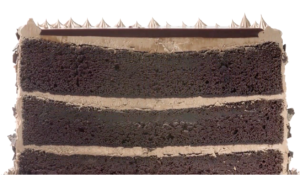 The best technique to pack cartons is the horizontal layering technique. The best movers in RI use this technique every day. The horizontal layering technique is analogous to a layer cake. In this analogy, the cake sections correspond to the items being packed and the frosting is the paper padding in between layers.
The best technique to pack cartons is the horizontal layering technique. The best movers in RI use this technique every day. The horizontal layering technique is analogous to a layer cake. In this analogy, the cake sections correspond to the items being packed and the frosting is the paper padding in between layers.
 The objective of the layering technique is to build horizontal layers of appropriately matched items. These layers should be protected by top and bottom cushioning, as well as cushioning between each layer.
The objective of the layering technique is to build horizontal layers of appropriately matched items. These layers should be protected by top and bottom cushioning, as well as cushioning between each layer.
Q.4…Where in the carton should the items be placed?
Here are the ground rules for placement of items using the horizontal layering technique:
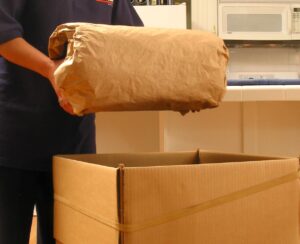 The largest available items are always placed in the carton first and smaller items are used to fill in around them.
The largest available items are always placed in the carton first and smaller items are used to fill in around them.
 Always try to place the largest available item in the largest available space.
Always try to place the largest available item in the largest available space.
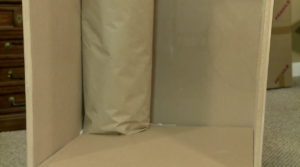 The tallest items are placed in the corner of the carton.
The tallest items are placed in the corner of the carton.
 Always try to match items of similar height and place them near each other.
Always try to match items of similar height and place them near each other.
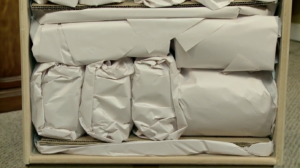 Try to distribute the packed weight evenly across the layer so the carton is not unbalanced.
Try to distribute the packed weight evenly across the layer so the carton is not unbalanced.
Q.5…How should that item be oriented in the carton?
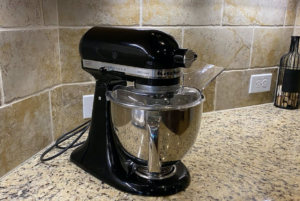 Always try to place items in the carton in the same orientation that are used or stored. For example, a large mixer should be packed exactly as it sits on the counter or in a cabinet.
Always try to place items in the carton in the same orientation that are used or stored. For example, a large mixer should be packed exactly as it sits on the counter or in a cabinet.
 Always try to place flat items against the sidewalls of the carton; not in the center of a layer. Items like platters, pictures, or other large surface items travel best when one side is fully supported by the carton.
Always try to place flat items against the sidewalls of the carton; not in the center of a layer. Items like platters, pictures, or other large surface items travel best when one side is fully supported by the carton.
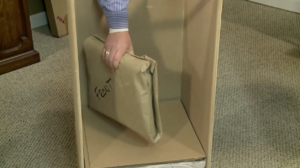 Always try to face the finished or most delicate surface of an object against the side of the container. For example, a small picture is best placed with the front to the side of the carton.
Always try to face the finished or most delicate surface of an object against the side of the container. For example, a small picture is best placed with the front to the side of the carton.


